| |  | TABLE OF CONTENTS
| March 2017 Volume 9, Issue 3 |  |  |  | 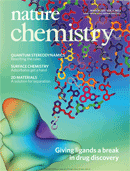 |  News and Views News and Views
 Articles Articles
 Corrigendum Corrigendum
 In Your Element In Your Element | |  | |  |  | | Advertisement |  | ELECTRON MICROSCOPY FOR MATERIALS - THE NEXT TEN YEARS
Presented by: Zhejiang University | Nature | Nature Materials
The conference will feature sessions on nanomaterials, functional materials, structural material, soft matter and biomaterials, and techniques development.
May 27-29, 2016 | Zhenjiang, China
Register now! |  | | |  | | | News and Views |  Top Top |  |  |  | |  | Articles |  Top Top |  |  |  | Dynamic undocking and the quasi-bound state as tools for drug discovery pp201 - 206
Sergio Ruiz-Carmona, Peter Schmidtke, F. Javier Luque, Lisa Baker, Natalia Matassova et al.
doi:10.1038/nchem.2660
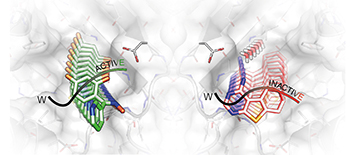
Structure-based drug design has generally focused on calculating binding free energies of protein–ligand complexes. It has now been shown that structural, rather than thermodynamic, stability — specifically, the work necessary to reach a quasi-bound state in which the ligand has just broken the most important contact with the receptor — can be calculated and used as a tool in virtual screening. |  |  |  | Direct assembly of multiply oxygenated carbon chains by decarbonylative radical–radical coupling reactions pp207 - 212
Kengo Masuda, Masanori Nagatomo and Masayuki Inoue
doi:10.1038/nchem.2639
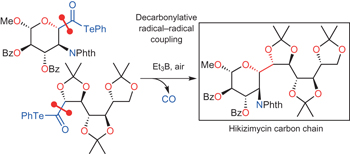
Pentoses and hexoses represent important structural motifs in bioactive secondary metabolites, though their synthesis often requires several elongation steps. Now, a method for radical–radical coupling reactions of sugar derivatives enables the single-step preparation of the oxygenated carbon chains of several natural products, including sagittamide D, maitotoxin and hikizimycin.
Chemical compounds
See also: News and Views by Zhang & Li |  |  |  | From helical to planar chirality by on-surface chemistry pp213 - 218
Oleksandr Stetsovych, Martin Švec, Jaroslav Vacek, Jana Vacek Chocholoušová, Andrej Jančařík et al.
doi:10.1038/nchem.2662
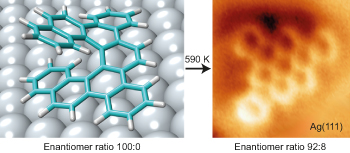
Flat, prochiral molecules form chiral adsorbates on achiral surfaces, but such assemblies are globally racemic. Now, it is shown that this mirror symmetry can be broken through stereocontrolled on-surface synthesis. Enantiopure helicene molecules can be transformed into flat, enantiofacially adsorbed products through a cascade of reactions on Ag(111) monitored by high-resolution scanning probe microscopy.
Chemical compounds
See also: News and Views by Ernst |  |  |  | Controlling quantum-beating signals in 2D electronic spectra by packing synthetic heterodimers on single-walled carbon nanotubes pp219 - 225
Lili Wang, Graham B. Griffin, Alice Zhang, Feng Zhai, Nicholas E. Williams et al.
doi:10.1038/nchem.2729
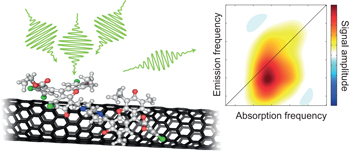
Synthetic heterodimers provide a platform to demonstrate molecular design principles of vibronic coupling. Now, it has been shown that quantum beating caused by vibronic coupling can be controlled by packing a structurally flexible heterodimer on single-walled carbon nanotubes. This quantum beating requires a vibration to be resonant with the energy gap between excited states and structural rigidity.
Chemical compounds
See also: News and Views by Turner |  |  |  | Imaging quantum stereodynamics through Fraunhofer scattering of NO radicals with rare-gas atoms pp226 - 233
Jolijn Onvlee, Sean D. S. Gordon, Sjoerd N. Vogels, Thomas Auth, Tijs Karman et al.
doi:10.1038/nchem.2640
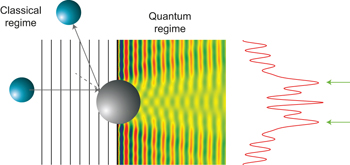
Stereodynamics describes how the vector properties of molecules affect the probabilities of specific processes in molecular collisions. Measurements of irregular diffraction patterns for NO radicals colliding with rare-gas atoms reveal a previously unrecognized type of quantum stereodynamics and a ‘propensity rule’ for the magnetic quantum number (m) of the molecules. |  |  |  | Chemoproteomic profiling and discovery of protein electrophiles in human cells pp234 - 243
Megan L. Matthews, Lin He, Benjamin D. Horning, Erika J. Olson, Bruno E. Correia et al.
doi:10.1038/nchem.2645

A chemical proteomic strategy is described for the discovery of protein-bound electrophilic groups in human cells. Using this approach, the dynamic regulation of the pyruvoyl catalytic cofactor in S-adenosyl-L-methionine decarboxylase was characterized and an N-terminal glyoxylyl modification on secernin proteins was discovered. |  |  |  | Ionic solutions of two-dimensional materials pp244 - 249
Patrick L. Cullen, Kathleen M. Cox, Mohammed K. Bin Subhan, Loren Picco, Oliver D. Payton et al.
doi:10.1038/nchem.2650

Isolating nanoscale species in liquids permits their scalable manipulation, enabling numerous fundamental and applied processes. Thus, achieving true dissolution of 2D materials is particularly desirable. Now, ionic salts of a range of important layered materials have been shown to spontaneously dissolve, yielding solutions of charged, monodisperse, undamaged and easy-to-manipulate 2D nanosheets. |  |  |  | Dynamic control of chirality and self-assembly of double-stranded helicates with light pp250 - 256
Depeng Zhao, Thomas van Leeuwen, Jinling Cheng and Ben L. Feringa
doi:10.1038/nchem.2668
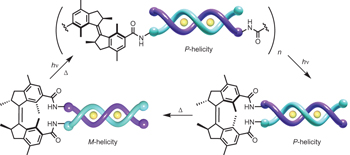
Switching the chirality of helicates non-invasively is challenging, even though helicates were discovered some decades ago. Now, by incorporating a light-driven molecular motor into a Cu(I)-helicate, the chirality of the metal helicate as well as the assembly and disassembly processes can be switched non-invasively by light and heat.
Chemical compounds |  |  |  | Why copper is preferred over iron for oxygen activation and reduction in haem-copper oxidases pp257 - 263
Ambika Bhagi-Damodaran, Matthew A. Michael, Qianhong Zhu, Julian Reed, Braddock A. Sandoval et al.
doi:10.1038/nchem.2643
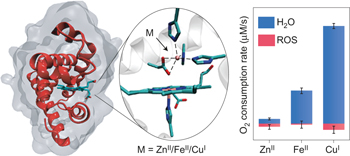
Despite decades of research into heme-copper oxidases, the advantages provided by copper over iron as the non-heme metal has remained unclear. Now, the preference of copper over iron has finally been explained. Copper favours faster electron transfer and higher O–O bond activation, which results in much higher oxidase activity than would be achieved by an iron equivalent. |  |  |  | Synthesis of ent-BE-43547A1 reveals a potent hypoxia-selective anticancer agent and uncovers the biosynthetic origin of the APD-CLD natural products pp264 - 272
Nikolaj L. Villadsen, Kristian M. Jacobsen, Ulrik B. Keiding, Esben T. Weibel, Bjørn Christiansen et al.
doi:10.1038/nchem.2657
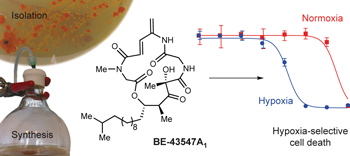
Anti-proliferative compounds that display enhanced toxicity in a low-oxygen (hypoxic) environment may be used to eradicate aggressive and therapy-resistant cancer cells. Now, a promising lead structure has been identified in the BE-43547-class of depsipeptide natural products.
Chemical compounds |  |  |  | Terahertz echoes reveal the inhomogeneity of aqueous salt solutions pp273 - 278
Andrey Shalit, Saima Ahmed, Janne Savolainen and Peter Hamm
doi:10.1038/nchem.2642
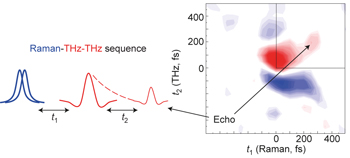
Ultrafast 2D Raman-THz spectroscopy has been applied to investigate the dynamics of the hydrogen-bond networks in aqueous salt solutions. It was demonstrated that the degree of inhomogeneity of the intermolecular modes of the liquid correlates with the structure-making capability of the cation. |  |  |  | Rational design of reversible fluorescent probes for live-cell imaging and quantification of fast glutathione dynamics pp279 - 286
Keitaro Umezawa, Masafumi Yoshida, Mako Kamiya, Tatsuya Yamasoba and Yasuteru Urano
doi:10.1038/nchem.2648
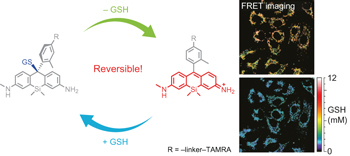
Reversible fluorescent probes for intracellular glutathione (GSH) imaging have now been designed and synthesized based on Si-rhodamine fluorophores. These probes are shown to be capable of quantifying the GSH concentration in various living cell types and also for monitoring real-time live-cell imaging of GSH dynamics with a temporal resolution of seconds.
Chemical compounds |  |  |  | Self-assembly of nanoparticles into biomimetic capsid-like nanoshells pp287 - 294
Ming Yang, Henry Chan, Gongpu Zhao, Joong Hwan Bahng, Peijun Zhang et al.
doi:10.1038/nchem.2641
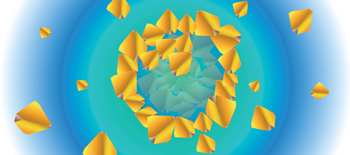
Biomolecular nanoscale compartments are ubiquitous in living systems. Although their formation is fairly straightforward, the same cannot be said of their inorganic counterparts. In this study, uniform nanoshells are observed self-assembling from stabilizer-free inorganic nanoparticles in water, under ambient conditions, and without the need for spherical tiling. This enables further study of inorganic prebiotic systems and compartmentalized biomimetic catalysis. |  | Corrigendum |  Top Top |  |  |  | Corrigendum: Intermediate tunnelling-hopping regime in DNA charge transport p295
Limin Xiang, Julio L. Palma, Christopher Bruot, Vladimiro Mujica, Mark A. Ratner et al.
doi:10.1038/nchem.2731 |  |  | In Your Element |  Top Top |  |  |  | The unveiled states of americium p296
Ben Still
doi:10.1038/nchem.2733
Made under a cloak of wartime secrecy, yet announced in the most public of ways — a radioactive element that governments insist we take into our homes. Ben Still explains how element 95 is one of real contradiction. |  Top Top |  |  |  |  |  |  |  |  | Natureevents is a fully searchable, multi-disciplinary database designed to maximise exposure for events organisers. The contents of the Natureevents Directory are now live. The digital version is available here.
Find the latest scientific conferences, courses, meetings and symposia on natureevents.com. For event advertising opportunities across the Nature Publishing Group portfolio please contact natureevents@nature.com |  |  |  |  |  |
|  |
|
|


No comments:
Post a Comment